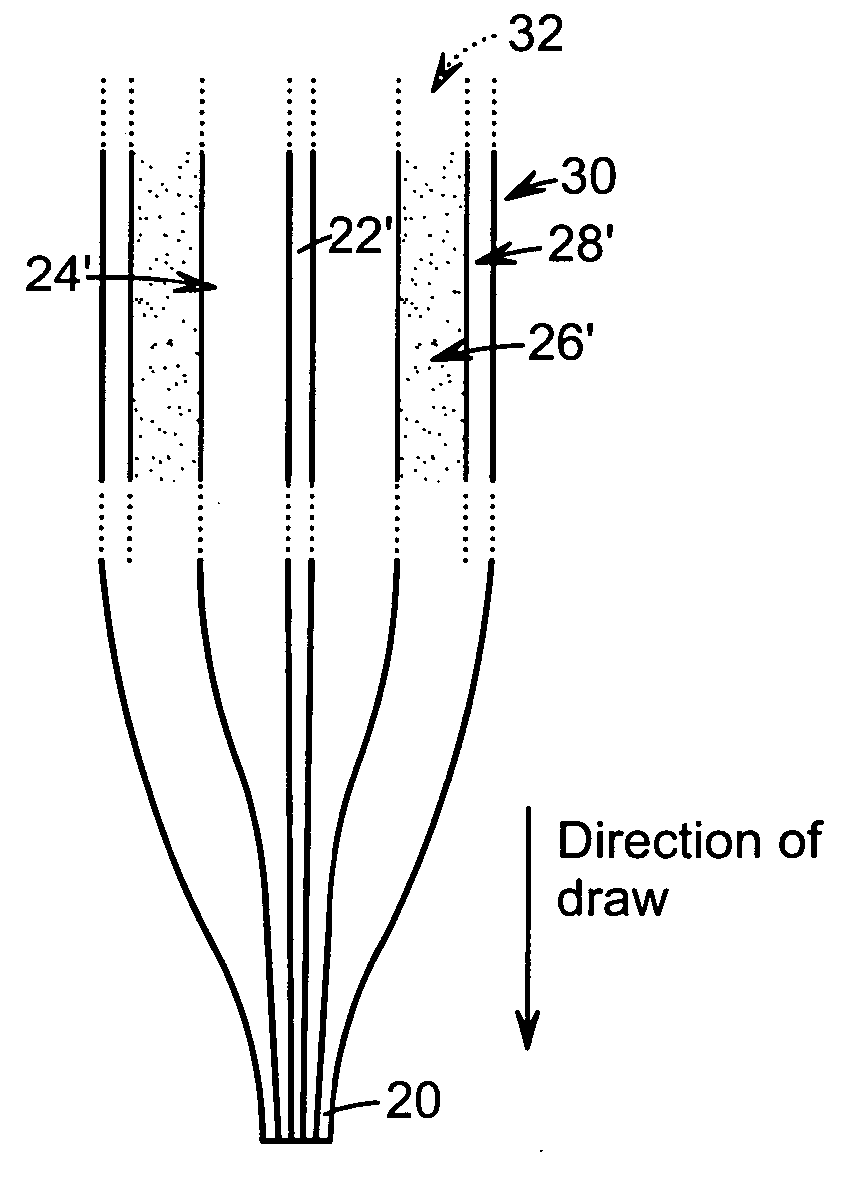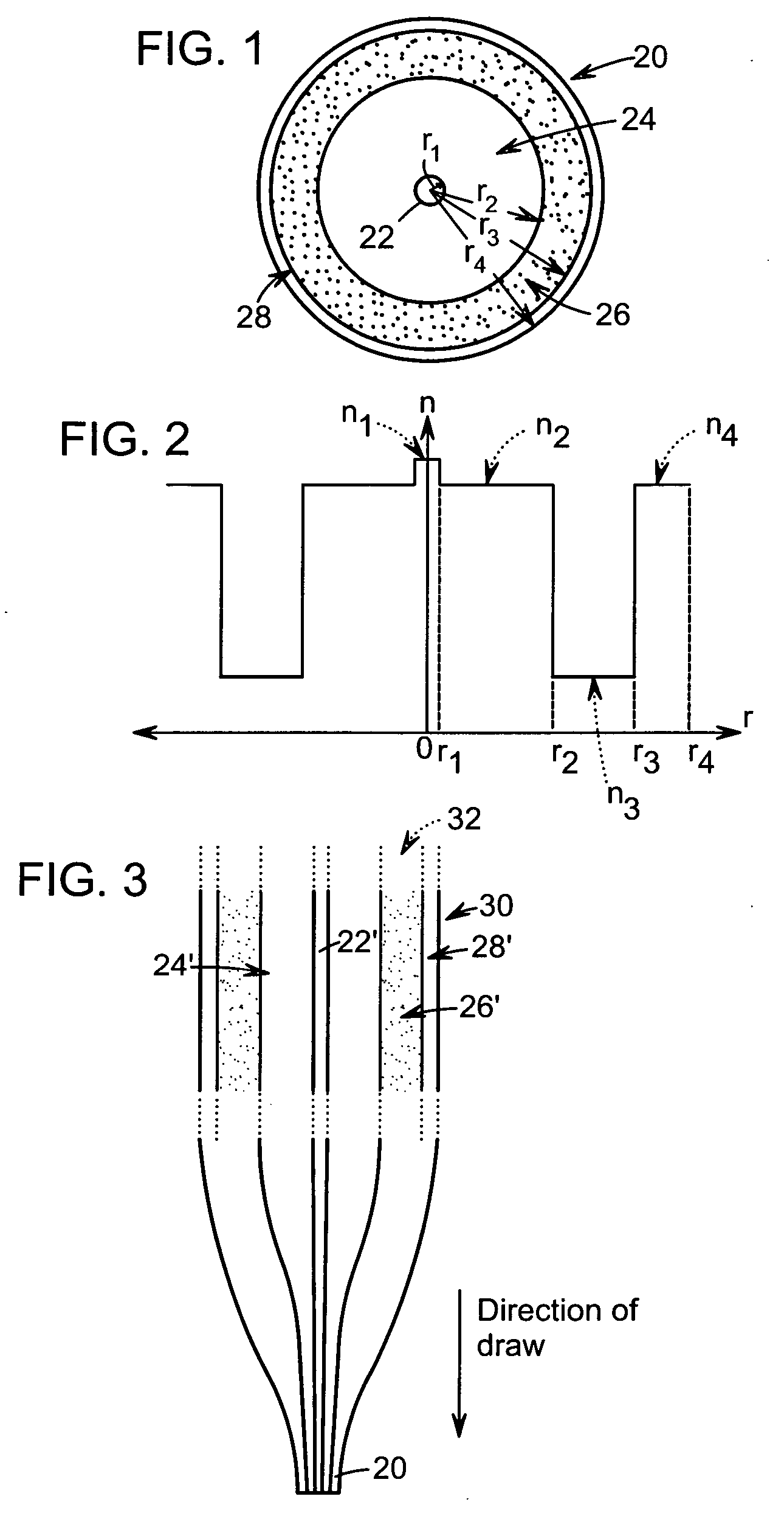Optical fiber with micro-structured cladding
a technology of optical fiber and microstructure, applied in the field of optical waveguides, can solve the problems of disadvantages or drawbacks, high cost and/or difficult matter of microstructure formation, etc., and achieve the effect of high numerical apertur
- Summary
- Abstract
- Description
- Claims
- Application Information
AI Technical Summary
Benefits of technology
Problems solved by technology
Method used
Image
Examples
Embodiment Construction
[0021] Optical fibers having a region (e.g., a cladding or a core) having an increased numerical aperture can be useful in certain applications, such as, for example, high-power fiber lasers or amplifiers. For example, in a double-clad fiber, it is often advantageous for the inner or pump cladding to have a high numerical aperture. It can also be desirable for the core of a fiber to have a higher numerical aperture. One approach to raise the numerical aperture of a region is to raise the index of refraction of the host material (e.g., silica) of a region of an optical fiber by doping the region with an index raising dopant (e.g., germanium). Where the core of a fiber is doped, the cladding can, for example, consist or consist essentially of silica or can comprise silica that includes a dopant, such as, for example, one on or more of germanium, silica or phosphorus. Realization of fibers of high numerical aperture by raising the index of a region can be limited by the processing diff...
PUM
| Property | Measurement | Unit |
|---|---|---|
| length | aaaaa | aaaaa |
| length | aaaaa | aaaaa |
| length | aaaaa | aaaaa |
Abstract
Description
Claims
Application Information
 Login to View More
Login to View More - R&D
- Intellectual Property
- Life Sciences
- Materials
- Tech Scout
- Unparalleled Data Quality
- Higher Quality Content
- 60% Fewer Hallucinations
Browse by: Latest US Patents, China's latest patents, Technical Efficacy Thesaurus, Application Domain, Technology Topic, Popular Technical Reports.
© 2025 PatSnap. All rights reserved.Legal|Privacy policy|Modern Slavery Act Transparency Statement|Sitemap|About US| Contact US: help@patsnap.com


